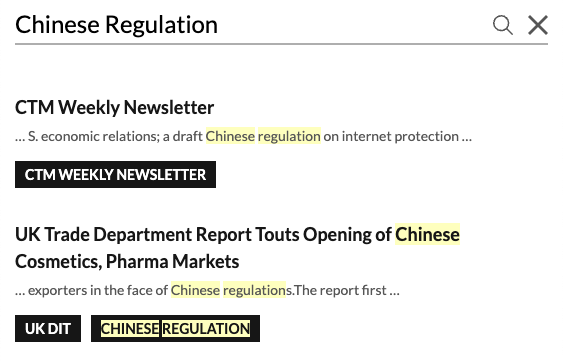On July 15, there were two developments in the China - Tariff Rate Quotas for Certain Agricultural Products WTO dispute: 1) the United States requested WTO authorization to retaliate against China because China allegedly failed to comply with an April 2019 WTO panel ruling; and 2) China requested an Article 21.5 WTO panel to examine whether certain measures it had taken brought it into compliance with that WTO panel ruling. Until recently, the dispute had been quiet, as the parties kept extending the time period for compliance. These new actions may lead to a more contentious period of litigation and possible tariff retaliation.
In May of 2019, the WTO's Dispute Settlement Body (DSB) adopted the panel report in this dispute. Before the panel, the U.S. claimed that China’s administration of its tariff rate quotas ("TRQs") for wheat, rice and corn violated a number of WTO obligations. The WTO panel concluded that China’s administration of these TRQs is inconsistent with the obligations in Paragraph 116 of China’s accession Working Party Report to administer TRQs on a transparent, predictable, and fair basis, using clearly specified requirements and administrative procedures, and in a manner that would not inhibit the filling of each TRQ. The United States and China agreed on a reasonable period of time for China to implement the DSB's recommendations, which, after subsequent modifications to the timetable, was set to expire on June 29, 2021.
In its communication to the WTO on July 15, the United States alleged that China had failed to bring its measures into compliance with its WTO obligations within the required period. Therefore, the United States was requesting authorization from the DSB to take countermeasures, pursuant to Article 22 of the DSU. The United States did not specify an amount of countermeasures, but rather requested authorization "to suspend concessions or other obligations with respect to China at an annual level based on the level of the nullification or impairment of benefits accruing to the United States under the covered agreements from the failure of China to implement the recommendations of the DSB." Generally speaking, such countermeasures take the form of higher tariffs imposed by the complainant on specified products from the country which is in violation of its WTO obligations.
It is standard practice in these situations for the responding party to request arbitration, pursuant to DSU Article 22.6, on the amount of the countermeasures. Article 22.6 states: "if the Member concerned objects to the level of suspension proposed, or claims that the principles and procedures set forth in paragraph 3 have not been followed ... , the matter shall be referred to arbitration." Upon a formal Article 22.6 arbitration request, an arbitration panel would be appointed to evaluate whether the level of suspension in the U.S. proposal for countermeasures is equivalent to the level of nullification or impairment it has suffered.
Not surprisingly, China had a different view of the situation than did the United States. Also on July 15, China requested a panel pursuant to DSU Article 21.5 seeking a finding that it was now in compliance with its WTO obligations, based on measures it had taken to comply with the panel’s ruling. Such a finding by a panel would prevent the authorization of countermeasures by the WTO.
In its panel request, China noted that it “has objected to the level of suspension of concessions or other obligations, proposed by the United States,” and therefore “[t]he DSB shall refer the matter to arbitration under Article 22.6 of DSU.” Furthermore, in China’s view, “the arbitrator under Article 22.6 should suspend its work, pending resolution of the dispute under the Article 21.5 proceedings.” That approach is the usual practice at this stage of WTO disputes: First determine whether a violation exists; then examine the level of countermeasures.
In its panel request, China also complained that “the United States has failed to initiate compliance proceedings under Article 21.5 of the DSU to seek multilateral review of actions taken by China to comply.” The proper approach to the relationship of DSU Article 21.5 and Article 22 is a point of disagreement, with most WTO Members invoking Article 21.5 first, while the United States sometimes initiates compliance proceedings under Article 21.5 and sometimes goes straight to Article 22, thereby putting the burden on the respondent in the case to request the Article 21.5 panel (however, the United States has not requested an Article 21.5 panel since 2016, and in recent years has tended to go directly to Article 22).
Both of the items will be on the agenda of the DSB meeting scheduled for July 26 (although the Article 22 suspension request may be pulled if China requests arbitration).
(For more details on the substance of the underlying dispute, see: Joseph Glauber and Simon Lester, “China – Tariff Rate Quotas for Certain Agricultural Products: Against the Grain: Can the WTO Open Chinese Markets? A Contaminated Experiment,” World Trade Review, 2021)

